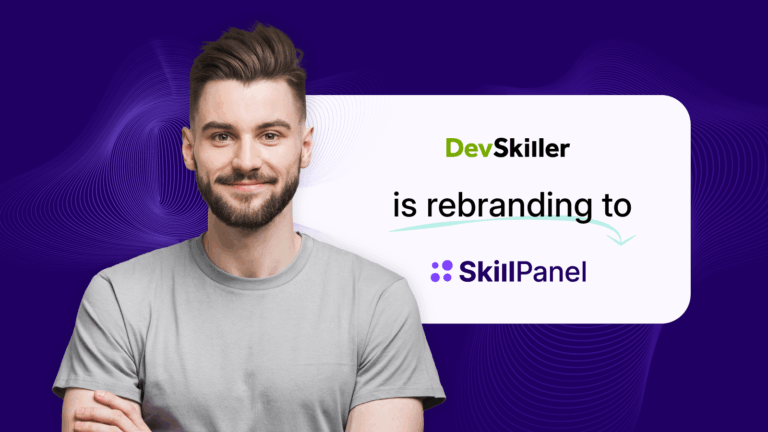
HR Transformation

In today’s world of workforce planning, performance management, and HR leadership, one concept has become increasingly important to any company’s success—HR transformation.
This article will explore:
- What is human resources transformation
- What HR transformation entails in practice
- How to apply human resources transformation in the world of competitive advantage and business success
- How to make HR transformation your way to greater business value
Let’s dive in!
What is HR Transformation?
HR transformation is the process of changing and evolving the traditional role of human resources specialists. This process aligns business strategy and strategic objectives, with the right people, and talent that the entire organization can access.
In today’s modern world, HR transformation aims to take full advantage of digital technologies, and employee data, and provide an overall bird’s-eye view perspective on talent management. Through these practices, HR transformation can provide better results by focusing on current and future business priorities. It’s about HR leaders taking responsibility beyond what’s been expected in the past. Namely, to optimize human-resources-focused processes, build a strategy, analyze the broad talent landscape within the company, and manage the talent and skills of current employees.
Even though business leaders take part in this HR transformation journey, a successful HR transformation only takes place if it’s a total metamorphosis that involves the whole company. Human resources evolve, which then has a direct impact on the people that are managed. It also affects workforce planning and the operating model. In the end, a ripple effect has influenced all the elements of what constitutes the business.
Why HR Transformation matters
The world we live in is changing at a rapid pace. Just recently, a ton of employees have started not only to prefer remote work but also to make it their prerequisite when choosing employment. The digitized world is different from what we’re used to and it ought to be taken into account. The market has also become employee-oriented. While senior management might assume that they can pick and choose between candidates, it is the candidates who do the choosing.
It is, for this reason, that the HR team has to possess the critical skills to navigate through those employment oceans.
In order to call your HR evolution a ‘transformation process’ it ought to be multi-faceted. Changing or re-adjusting a single aspect of the broader picture won’t cut it. Additionally, you need to take both internal and external realities into account. The company has changed, is changing, or at the very least, will change. You always have to draw business leaders’ attention to the outside world and the market environment. HR processes may be contained only within the entity’s structure but it’s never in isolation from what’s happening in the outside world. On top of that, companies win or lose depending on whether HR staff can take full advantage of the skills in their companies. Achieving business goals is closely tied to the people working there and what they can do. It’s imperative to point out that a skills-oriented approach is essential, as employee data indicates that internal mobility leads to people staying longer.
It all necessitates a proper evolution of the role that is centered around the digital landscape, the skill-oriented approach, and operational excellence. This is what a successful HR transformation strategy entails.
How to plan and execute a proper HR Transformation in today’s market
According to the APQC blog, there are four main components of HR transformation. Let’s take a look at them one by one.
- Digitizing data and information
In order to ensure a smooth transformation process for HR executives, customer service executives, and HR professionals, overall you need to embrace the digital sphere in which the majority of the information flow is happening.
It’s best to use a tool that can aggregate information about employees, preferably outlining their skills and capabilities. The days of heavy paper-filled folders are long gone. You need to start leaning into digital hr transformation.
- Automatic processes
If an action repeats regularly and it requires human resources or input every time, maybe it’s a signal that you can try to automate it. This can range from sorting incoming CVs with an AI software or sending invoices to setting up recurring meetings instead of manually scheduling each and every time.
Whatever the action is and however much effort it requires, there may be an opportunity to automate it, hence saving a lot of workload across the board long term.
- Applying analytics
This component might arguably be the most important of all the points mentioned. Becoming data-driven and using measurable success metrics is key to a successful transformation strategy. The data might come from a variety of sources and touch on a diverse set of topics. You want proper skill set analytics to both avoid a skill mismatch between an employee and a position but also fully utilize a person’s potential.
Speaking of potential, employees nowadays require thought-through learning paths so that they know what they can achieve and learn if they stay. Crucially, it’s in the interest of the company that they stay as well in order to build a coherent and strong workforce and avoid re-hiring costs. All of the aforementioned points can be done in multiple ways e.g. through skill maps, skill trees, and flow charts.
- Enabling digital interactions and communications
Online information can be passed on, processed, edited, and reused with exceptional ease.
It is imperative to set up a system of communication channels that goes with the overall transformation process but specifically within digital HR transformation. Tools like Confluence, Jira, and Slack can all help to achieve that system.
Choosing the right technology can make or break your HR transformation strategy
Once you’ve decided that you want to undertake a transformation process, you need to actually choose a tangible way of achieving it. In the spirit of digital technology, the tool has to integrate the tangible and intangible. It’s best if the technology aggregates the employees, their skills, and their learning paths which, in turn, gives you full control.
The last thing you want is to invest your capital but also your precious time in adapting a new tool to help HR professionals in HR transformation efforts, to then realize that it wasn’t a good choice in the first place. When deciding which tool to use, you should analyze what it currently offers, what its potential is, how user-friendly it is, and whether its functionalities align with your business goals and business needs.
How TalentBoost supports HR Transformation
DevSkiller TalentBoost is a tool that can assist with HR transformations and even take on most of the process. It provides you with skill maps thanks to which you can assess each employee and have a clear, and visual representation of the talent pool.
On top of that, there is a built-in career page where you can set up a promotion path individually for each employee, based on the skills they have mapped. TalentBoost helps you with talent management but also gives the employee a clear vision of the direction in which to head.
In addition, when you have access to the map of very specific skills that your workforce possesses, it is much easier to conduct workforce planning. You can think ahead and already start analyzing potential needs for reskilling.
HR transformation is not a trivial matter as, in the next few years, 50% of the workforce will need reskilling. A tool like TalentBoost offers all the information that you could need to properly map out such a process in advance.
Riflessioni conclusive
If you’re looking to plan out HR transformation, you will need to be meticulous in your efforts. It’s a time-consuming process that’s multi-faceted and affects the company as a whole. A tool like TalentBoost can improve the outcomes and mitigate the risks.
If you would like to learn more about TalentBoost or discuss your HR transformation plans, then book in a free call with one of our product experts.




